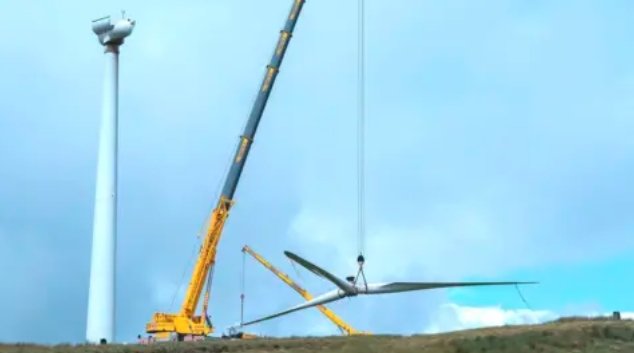Scotland’s pioneering Hagshaw Hill wind farm in South Lanarkshire has completed a major upgrade, replacing old turbines with modern ones that generate five times more clean energy. This boost allows the site to power the equivalent of 57,000 homes, marking a key step in the nation’s push toward renewable goals.
A Milestone in Scotland’s Wind Energy History
The Hagshaw Hill wind farm first opened in 1995 as the country’s initial commercial onshore project, kickstarting a revolution in green power. Over nearly three decades, its 26 original turbines produced significant electricity, but technology advanced, making an upgrade essential to keep pace with modern demands.
Operators removed those aging units in 2023 and installed 14 new, taller models early this year. This repowering process, approved back in 2020 after an application in 2018, uses existing land efficiently without needing fresh sites. It shows how older facilities can evolve to support broader environmental aims.
Experts note that such updates help Scotland meet its ambitious targets for onshore wind by 2030. The government aims for at least 20 gigawatts of capacity, building on current progress where renewables already supply over 97 percent of electricity needs in recent years.

Power Output Soars with Advanced Technology
The new turbines, made by Nordex, stand much taller at 200 meters to blade tip and pack more punch than their predecessors. Together, they deliver over 79 megawatts, up from the original 16 megawatts, a clear win for efficiency.
This surge means the farm now contributes far more to the grid, helping reduce reliance on fossil fuels. In a time when energy prices fluctuate and climate concerns grow, these improvements provide stable, low-cost power to thousands of households.
To illustrate the change, consider this comparison of key specs:
| Feature | Original Setup (1995) | Upgraded Setup (2025) |
|---|---|---|
| Number of Turbines | 26 | 14 |
| Total Capacity | 16 MW | 79 MW |
| Homes Powered | About 11,400 | 57,000 |
| Turbine Height | 55 m to tip | 200 m to tip |
Such advancements highlight how repowering cuts the number of machines while multiplying output, minimizing visual and land impacts.
Recycling Efforts Cut Waste and Emissions
One standout aspect of the project involves handling the old blades responsibly. Every single one from the 26 turbines goes to a specialist firm that recycles them into new building materials, like alternatives to concrete and plastics. This approach avoids landfills or burning, slashing carbon footprints in construction.
The recycling method diverts waste that would otherwise harm the environment and replaces high-emission products with greener options. It aligns with Scotland’s wider efforts to build a circular economy for renewables, where end-of-life parts fuel new growth.
In related news, similar initiatives across Europe have recycled thousands of tons of turbine materials this year, proving the tech works at scale. For Hagshaw Hill, this means the site’s legacy extends beyond energy to sustainable practices that inspire other farms.
Jobs and Community Benefits on the Rise
The upgrade created real economic ripples in the area. More than 100 positions, from skilled technicians to local suppliers, supported the work of dismantling and rebuilding. This injection of activity bolsters rural economies often hit hard by shifting industries.
Communities nearby see even bigger gains through an expanded fund. Annual payments now reach nearly 400,000 pounds, a 26-fold increase from before, directed to villages like Coalburn and Douglas. Funds will enhance facilities, spark jobs, and improve life for residents.
- Key community investments include better local parks and youth programs.
- Training schemes for green jobs aim to equip locals for future renewable roles.
- Partnerships with schools promote STEM education tied to energy topics.
These steps ensure that the wind farm’s success lifts everyone involved, fostering long-term support for green projects.
Driving Toward a Greener Scotland
This repowering fits into Scotland’s strong renewable track record, where the sector generated 29.5 percent of total energy needs in 2023 and continues to expand. With targets for net-zero by 2045, sites like Hagshaw Hill lead the charge against climate change while powering homes affordably.
Leaders emphasize that updating existing farms offers the quickest path to more capacity, avoiding lengthy new builds. As global events like extreme weather push for action, Scotland’s model draws international attention for balancing growth with care for nature.
Recent offshore approvals, such as the massive Berwick Bank project, complement onshore efforts, promising power for millions more. Together, they position the nation as a renewable powerhouse.
Readers, what do you think about this upgrade and its role in Scotland’s energy future? Share your views in the comments below and spread the word by sharing this article with friends who care about green progress.

















